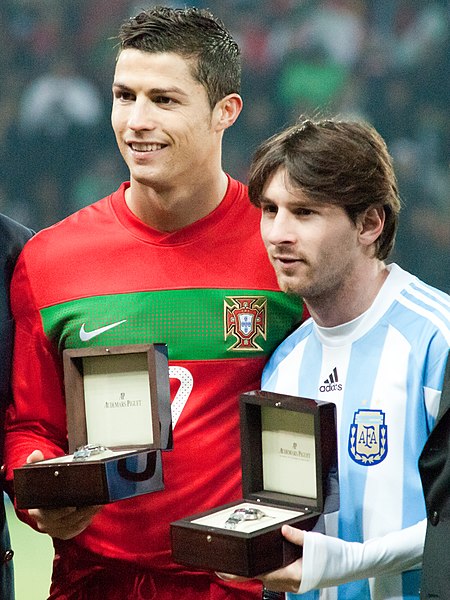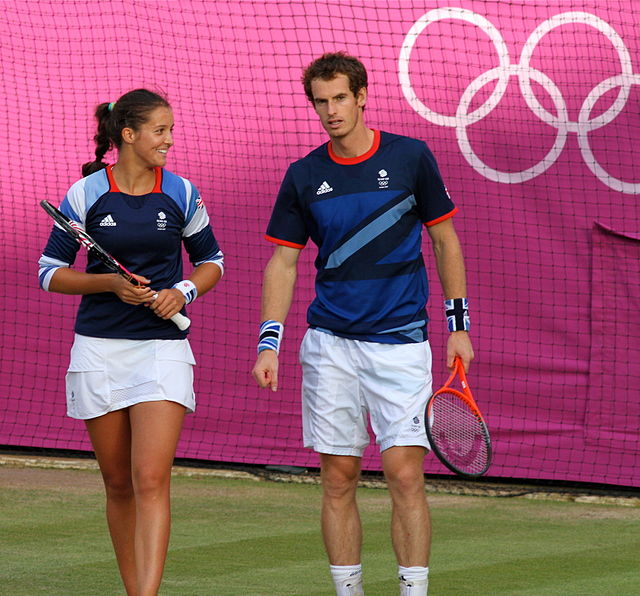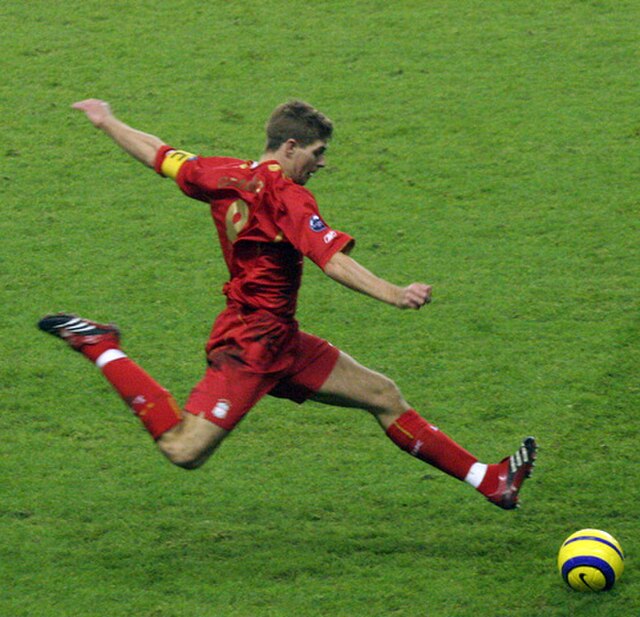In professional sports, as opposed to amateur sports, participants receive payment for their performance. Professionalism in sport has come to the fore through a combination of developments. Mass media and increased leisure have brought larger audiences, so that sports organizations or teams can command large incomes. As a result, more sportspeople can afford to make sport their primary career, devoting the training time necessary to increase skills, physical condition, and experience to modern levels of achievement. This proficiency has also helped boost the popularity of sports. In most sports played professionally there are many more amateur than professional players, though amateurs and professionals do not usually compete.
Professional athletes like footballers Cristiano Ronaldo and Lionel Messi receive salaries that come from corporate sponsors that advertise on their uniforms or around the sporting venue, as well as from the fans who pay money to attend the game
Andy Murray and Laura Robson, professional athletes competing in the tennis mixed doubles event at the 2012 Summer Olympics.
Liverpool Footballer Steven Gerrard preparing to strike the ball, 2005
Amateur sports are sports in which participants engage largely or entirely without remuneration. The distinction is made between amateur sporting participants and professional sporting participants, who are paid for the time they spend competing and training. In the majority of sports which feature professional players, the professionals will participate at a higher standard of play than amateur competitors, as they can train full-time without the stress of having another job. The majority of worldwide sporting participants are amateurs.
An amateur mixed doubles match of beach volleyball
Public football pitches are common in residential areas, such as this pitch on the Orchard Park Estate, Kingston upon Hull, England.
Australia vs Canada, ultimate players at the 2012 WUGC in Japan. Ultimate Canada
An amateur golfer celebrates his first hole-in-one.







